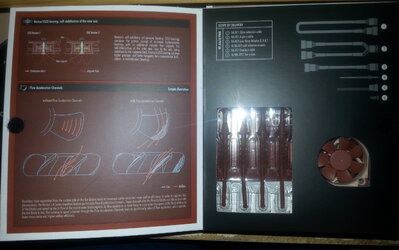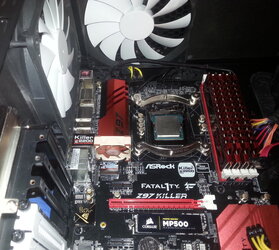after a 30min test with 4.4Ghz at about 1.28V and 1.15v x39 cache it did not crash, i guess the cache is probably stable then
gonna give 1.295 @ 4.5Ghz a try
I'm not really sure where the OP is currently at right now with his overclock??
But it appears that his 4690K sample needs ~1.28v/1.30v volts for 4.4GHz... I'd think the chip would also do 4.3GHz with ~1.22v/1.25v vcore and 4.2GHz with ~1.15/1.20v vcore.
If the OP wants to push upwards towards a 4.5GHz overclock then I'd test or look at trying out in BIOS using 45x core settings @ ~1.35v vcore and 39x cache settings @ ~1.15v with CPU Input voltage @ ~1.8v LLC enabled.
The chip might even need a little more vcore if the sample is approaching/climbing a voltage wall?? Also If you are stress testing with Prime95 (AVX enabled) at ~1.35v(+) then you might end up being temp limited and run out of cooling? I'd try doing initial stress tests with something that runs a little less hot like AIDA64 or ASUS RealBench.
The OP could also check/test some of the following BIOS settings from the Z97 Killer User's Manual:
Page 97 of the manual... FIVR (fully integrated voltage regulator) Configuration:
FIVR Switch Frequency Signature: Select whether to boost or lower the FIVR Switch Frequency.
FIVR Switch Frequency Offset: Configure the percentage of frequency boost or deduction.
CPU Integrated VR Faults: Disable FIVR Faults to raise the threshold to trigger CPU over current protection and over voltage protection for better overclocking capabilities
CPU Integrated VR Efficiency Mode: Enable FIVR Efficiency Management for power saving. Disable for better performance and overclocking capabilities.
Often default/auto motherboard BIOS settings work fine but it wouldn't hurt to tweak/try out some of these to see if they might help a little with your overclock.
Usually the biggest factor in good overclock comes down to the individual quality (margin) of the silicon within a particular chip sample.

